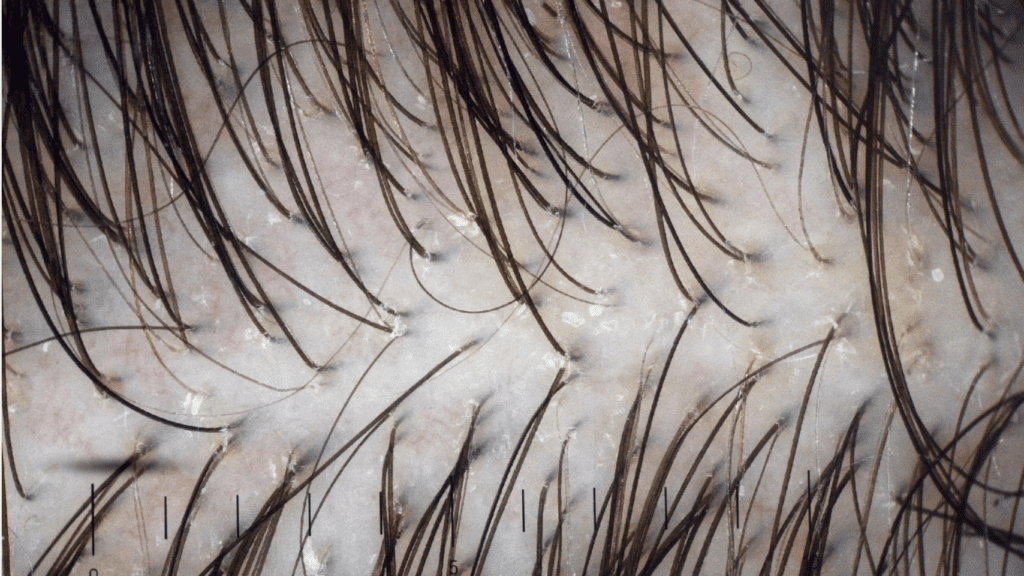Hair cloning promises to transform hair restoration, bringing new hope to millions experiencing hair loss. With cutting-edge research led by companies like Aderans and Stemson, hair regeneration is moving closer to reality. But what is hair cloning, and how might it shape the future of hair restoration? This article covers the latest advancements in hair cloning, the unique methods Aderans and Stemson bring to the table, and the challenges that remain.
What is Hair Cloning? Understanding the Basics
What exactly is hair cloning, and how does it work?
Hair cloning is an innovative technique where scientists replicate hair follicles in the lab to create new, healthy hair cells for implantation into areas of hair loss. Unlike traditional hair transplants, which redistribute existing hair, hair cloning aims to generate new follicles, making it a suitable solution for individuals with advanced hair loss who may lack sufficient donor hair.
Hair cloning technology relies on advances in stem cell research, cellular growth, and bioengineering. Scientists begin by extracting a small sample of healthy hair follicles, isolating cells that promote hair growth, and cultivating these cells in a controlled environment. The goal is to produce viable hair follicles that can be transplanted back onto the scalp, offering a potentially limitless supply of hair for those struggling with hair thinning and baldness.
For in-depth information on hair cloning, refer to studies like Kobayashi et al., 2010 and recent work on stem cell research by Aderans.
Key Players in Hair Cloning Research: Aderans and Stemson
Who are Aderans and Stemson, and why are they leading hair cloning research?
Aderans and Stemson are pioneering companies in hair regeneration research. Aderans, a well-known name in the hair restoration industry, has heavily invested in hair cloning technology. They have made significant advancements in cultivating hair follicles using stem cells and biotechnological approaches.
Stemson Therapeutics has also made headlines for its innovative hair cloning methods. By combining stem cell technology with bioengineering, Stemson aims to develop bioengineered hair follicles ready for transplantation. Their methods overcome the limitations of traditional hair restoration and advance hair cloning as a viable option for individuals worldwide.
How Do Aderans and Stemson Differ in Their Approaches?
Each company has a distinct approach. Aderans focuses on using stem cells to grow new hair follicles in a laboratory, leveraging its expertise in hair regeneration technology. Conversely, Stemson combines genetic engineering with stem cell techniques to develop hair follicles from scratch. This synergy in expertise could lead to safe, effective, and lasting hair restoration solutions.
For more details on Aderans’ work, see their research page here, and for Stemson Therapeutics, refer to Stemson’s Scientific Approach.
The Science Behind Hair Cloning: How It Works
How does hair cloning work on a cellular level?
Hair cloning science relies on stem cells, unique cells that can transform into various cell types. Hair follicles contain specific stem cells responsible for hair growth. By isolating and cultivating these cells, researchers create new hair follicles capable of natural growth.
Key Steps in the Hair Cloning Process
- Cell Extraction: Extract healthy hair follicles from the patient’s scalp.
- Cell Cultivation: Culture the extracted cells in a lab to stimulate growth.
- Follicle Replication: Use bioengineering to replicate hair follicles.
- Transplantation: Transplant the lab-grown follicles back into the patient’s scalp.
This process is experimental but has shown significant progress. Stem cells drive this process, enabling the generation of new, functional hair follicles. Such breakthroughs in cellular research could soon pave the way for permanent hair restoration.
For additional technical insight into stem cells and hair regeneration, see this article on stem cell treatment.

Current Progress and Challenges in Hair Cloning
What has hair cloning research achieved so far?
Though hair cloning has not yet reached clinical availability, progress continues. Both Aderans and Stemson have hit milestones in follicle cultivation and replicating the natural hair growth cycle in lab settings. These developments suggest that viable hair cloning treatments may soon become available.
However, the field faces substantial challenges, including:
- Cell Viability: Cloned cells must remain healthy and capable of hair growth after transplantation.
- Scalability: Researchers need to make hair cloning a large-scale solution.
- Regulatory Hurdles: Approval from regulatory bodies is essential before hair cloning can be widely available.
The costs of hair cloning research are also considerable. Biotechnological facility investments, regulatory compliance, and clinical trials all contribute to high expenses. However, as technology advances, these barriers are expected to lessen.
For more insights, check this study on challenges in regenerative medicine.
The Future of Hair Cloning: What to Expect
When will hair cloning become available, and how will it impact hair restoration?
Experts predict hair cloning could become a clinical reality within the next decade. With advancements from companies like Aderans and Stemson, hair cloning may soon offer a permanent hair restoration solution, especially for individuals unsuitable for hair transplants due to limited donor hair.
In the future, hair cloning could emerge as a standard treatment for those facing severe hair loss, providing a potentially limitless source of hair follicles. The procedure could also offer a minimally invasive alternative to traditional hair transplants, with shorter recovery times and more natural-looking results.
Potential Timeline for Hair Cloning Availability
- Short-Term (1-5 Years): Continued research and development with further refinement.
- Mid-Term (5-10 Years): Possible approval of initial hair cloning treatments for the public.
- Long-Term (10+ Years): Hair cloning becomes a widely accessible, affordable option for hair restoration.
Stay updated on hair cloning developments with the latest news from Stemson Therapeutics.
How Hair Cloning Could Transform the Hair Restoration Industry
What are the benefits of hair cloning over traditional hair restoration methods?
Hair cloning offers a revolutionary alternative to traditional hair transplants. Unlike conventional techniques, which rely on moving hair from one part of the scalp to another, hair cloning creates new follicles. This advancement could allow patients with extensive hair loss to achieve fuller, more natural-looking coverage.

Key Benefits of Hair Cloning for Patients
- Unlimited Donor Hair: No longer limited by available donor hair.
- Natural Hair Growth: Lab-grown follicles grow naturally, blending seamlessly with existing hair.
- Fewer Transplant Sessions: With a consistent supply of new follicles, fewer sessions may be needed.
- Minimized Scarring: Hair cloning could eliminate invasive procedures, reducing scarring and recovery time.
These benefits position hair cloning to transform the hair restoration industry. As research progresses, more patients could access effective, long-lasting solutions for hair loss.
Hair cloning represents a promising future in hair restoration, and pioneering companies like Aderans and Stemson are leading the way. Their combined expertise in stem cell technology and bioengineering may soon offer a groundbreaking solution for hair loss, once thought impossible. Although challenges remain, the future of hair cloning looks bright, promising transformative change for millions worldwide.
For those interested in exploring hair restoration options or staying updated on the latest hair cloning advances, consider following updates from top clinics and research institutions. As the field continues to evolve, staying informed will ensure you’re among the first to benefit from these scientific breakthroughs.

